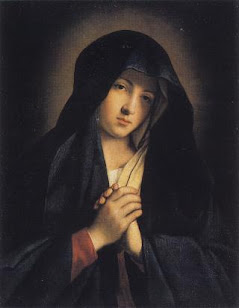6So when they met together, they asked him, "Lord, are you at this time going to restore the kingdom to Israel?"
7He said to them: "It is not for you to know the times or dates the Father has set by his own authority. 8But you will receive power when the Holy Spirit comes on you; and you will be my witnesses in Jerusalem, and in all Judea and Samaria, and to the ends of the earth."
9After he said this, he was taken up before their very eyes, and a cloud hid him from their sight.
10They were looking intently up into the sky as he was going, when suddenly two men dressed in white stood beside them. 11"Men of Galilee," they said, "why do you stand here looking into the sky? This same Jesus, who has been taken from you into heaven, will come back in the same way you have seen him go into heaven." (Acts 1: 1-11)
And we also read:
50When he had led them out to the vicinity of Bethany, he lifted up his hands and blessed them. 51While he was blessing them, he left them and was taken up into heaven. 52Then they worshiped him and returned to Jerusalem with great joy. 53And they stayed continually at the temple, praising God. (Luke 24:50-53)
Today, we celebrate the Ascension of Our Lord, Jesus Christ, into Heaven—the second of the Glorious Mysteries of the Holy Rosary, following the Resurrection on Easter Sunday. The fruit of this mystery is hope.
Following His glorious Resurrection, Jesus spent forty days with His disciples. He taught them to understand the Scriptures and to preach repentance and forgiveness of sins in His name. He made sure his disciples saw Him enter His glory in His glorified human body; the body that still bore the scars of crucifixion, of nails and a sword. He gave them the unshakable certainty of knowing that the Lord they knew and loved and touched truly is alive forever just as He was when He walked among them. He was—he is—the same as before the crucifixion, only glorified.
The 40 days that Jesus returned to spend with the disciples give us hope—hope in the unending love and presence of the Lord in our world, in our lives, in our hearts. We can only imagine the painful surprise that the disciples experienced when Jesus, without much warning, ascended into Heaven. And again, like at the crucifixion, the disciples were left alone. But this time, they were only left alone physically. The body of the Lord had left them, but the Holy Spirit was strong within them. The knowledge of the kingdom remained alive within them. The hope of eternal salvation burned brightly, and as we read in the Gospel of Luke, they “returned to Jerusalem with great joy.”
We are reminded by the angels—just as the disciples were—that Jesus is coming back to us, just as He left us. And in that moment, we are given a foretaste of our Heavenly home. Jesus ascended into Heaven, but when He returns, Heaven will return with Him, transforming the earth. His home will become our home, and we will be glorified with Him, bathing in the purifying love of Almighty God. Heaven in real, alive, and waiting for each of us.
 Cyril of Alexandria wrote regarding the Ascension of Our Lord, "As man then, Jesus appeared before the Father on our behalf, to enable us whom original sin had excluded from his presence once more to see the Father's face. As the Son he took his seat to enable us as sons and daughters through him to be called children of God. So Paul, who claims to speak for Christ, teaching that the whole human race has a share in the events of Christ's life, says that God has raised us up with him and enthroned us with him in heaven. To Christ as the Son by nature belongs the prerogative of sitting at the Father's side; this honor can rightly and truly be ascribed to him alone. Yet because his having become man means that he sits there as one who is in all respects like ourselves, as well as being as we believe God from God, in some mysterious way he passes this honor on to us."
Cyril of Alexandria wrote regarding the Ascension of Our Lord, "As man then, Jesus appeared before the Father on our behalf, to enable us whom original sin had excluded from his presence once more to see the Father's face. As the Son he took his seat to enable us as sons and daughters through him to be called children of God. So Paul, who claims to speak for Christ, teaching that the whole human race has a share in the events of Christ's life, says that God has raised us up with him and enthroned us with him in heaven. To Christ as the Son by nature belongs the prerogative of sitting at the Father's side; this honor can rightly and truly be ascribed to him alone. Yet because his having become man means that he sits there as one who is in all respects like ourselves, as well as being as we believe God from God, in some mysterious way he passes this honor on to us."I adore You,
Son of Mary,
my Savior and my Brother,
for You are God.
I follow You in my thoughts,O firstfruits of our race,
as I hope one day by Your grace
to follow You in my person
into heavenly glory.
In the meantime,
do let me neglect the earthly task
that You have given me.
Let me labor diligently
all my life
with a greater appreciation for the present.
Let me realizethat only by accomplishing
true human fulfillment
can I attain Divine fulfillment
and ascend to You at the completion of my work.
























